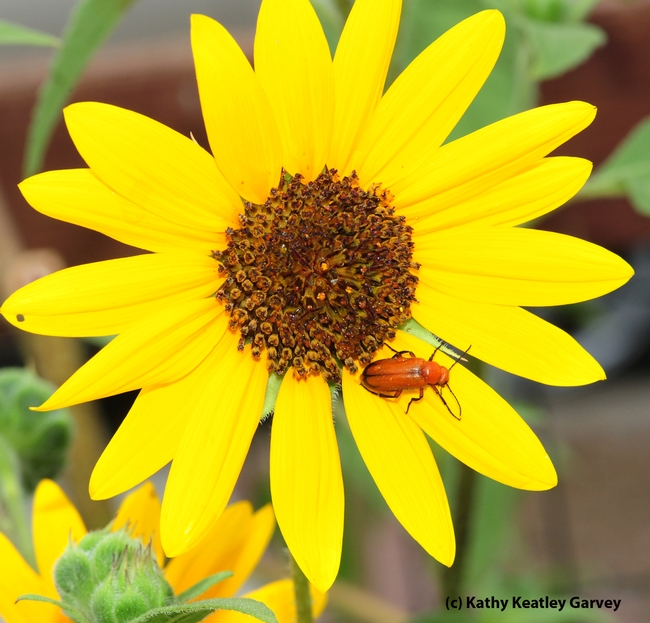It was a reddish-orange beetle, moving a little but not a lot.
We spotted it on a sunflower bordering the Avant Garden in Benicia. The garden, located at the corner of First and East D streets, thrives with assorted tomatoes, peppers, onions, strawberries, cucumbers, eggplant, squash and ornamentals.
This little beetle, as identified by Lynn Kimsey, director of the Bohart Museum of Entomology and professor of entomology at UC Davis, is a meloid blister beetle.
"These are nest parasites of wasps and mostly bees," Kimsey said.
Blister beetles (Coleoptera) belong the family Meloidae. They produce a blistering agent (thus their name) known as cantharidin, that can blister the skin. Horses can die from ingesting blister-beetle contaminated feed, such as alfalfa.
Scientists estimate there are approximately 7500 known species worldwide. They vary in size, shape and color.
The adults feed on multiple plants, including garden vegetables, ornamentals, vegetables, alfalfa, soybeans and potatoes. Larvae dine on grasshopper eggs and the like. Solitary bee nests are a haven for immature stages of some blister beetle species.
UC Davis evolutionary ecologist Leslie Saul-Gershenz, a graduate student in the Neal Williams lab, UC Davis Department of Entomology, researches a solitary ground-nesting bee, Habropoda pallida and its nest parasite, a blister beetle, Meloe franciscanus, found in the Mojave National Preserve.
Saul-Gershenz says the larvae of the parasitic blister beetle produce a chemical cue or a pheromone similar to that of a female solitary bee to lure males to the larval aggregation. The larvae attach to the male bee and then transfer to the female during mating. The end result: the larvae wind up in the nest of a female bee, where they eat the nest provisions and likely the host egg.
She and her colleagues most recently published their research in the April edition of the National Park Service's Mojave National Preserve Science News. You can read about her exiting work on the Department of Entomology website and see her amazing photograph of blister-beetle larvae on a digger bee. That's something you won't forget.
Attached Images:

